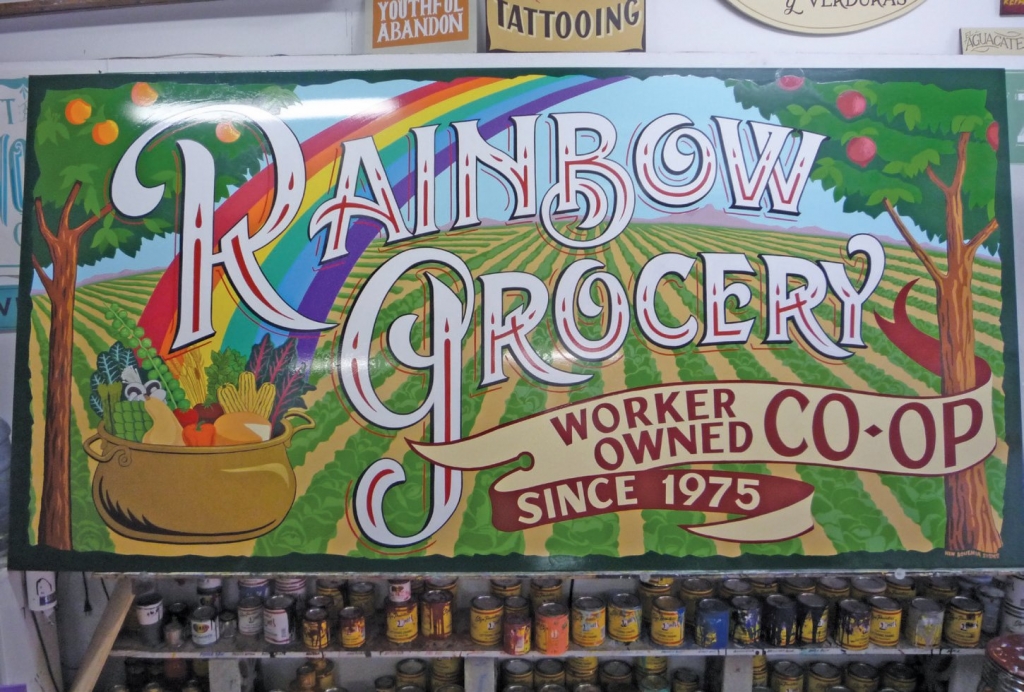If you ask any longtime signmakers what development has most transformed their business, they’ll almost invariably say, “The computer.” Software, fabrication equipment – from inkjet printers to CNC routers – and other CAS tools have moved shop productivity light-years forward.
Undeniably, executing work at greater speed provides tremendous benefit. Yet, such efficiency comes at a cost. When signmaking was the province of paint, mahl sticks and pounce bags, customers knew they were getting a distinct sign, rather than a mass-produced commodity.
Of course, the sign industry won’t revert en masse to traditional methods, but I remain optimistic there will always be demand for hand-rendered signage. It could be in historic districts, tourism-heavy older cities, such as New England resort towns or California wine meccas, or in trendsetting locales such as San Francisco, where a technology-based regional economy somehow reconciles with a proclivity for handcrafted signage and environmental graphics. The rekindled interest in handcrafted signage seems akin to the interest in locally produced food and goods. Perhaps, in the Information Age, people feel isolated, and crave the authentic, visceral connection that handcrafted materials provide.
Here are profiles of several signmakers who still honor the traditional craft in their shops, or push the creative boundaries of signage through their use of techniques and materials. The holidays are a time when we pay homage to tradition, so the December issue seems an appropriate showcase for handcrafted signage. Enjoy!
In 1999, Damon Styer began his career at a New Bohemia Signs (San Francisco) as a handlettering apprentice to Maurice O’Carroll. Eventually, the San Francisco Art Institute graduate (who’d spent five years working as a stock trader on the Pacific Stock Exchange) bought the business when O’Carroll left town. Styer’s business grew such that he enlisted a partner, Scott Thiessen, to help him manage the shop and its finances. Through a combination of serving small, locally owned stores and restaurants, and Bay Area tech giants like Facebook, this shop has evolved and now employs four painters.
“We paint 400 to 600 signs per year,” Thiessen said. “Over the last three years, most of our business has come via e-mail inquiries. We do no advertising; our signs sell other signs.”
Thiessen noted the shop’s business divides relatively evenly between window gilding and handpainted panels. He said that most of its panels comprise MDO, which requires treating the edges with a paintable, siliconized acrylic sealant to protect the finish.
‘Our clients ask for painted wood signs, but I steer them away from that,” Thiessen said. “There are some high-quality, polyurethane sealants out there, but if any water penetrates, the sign will peel and fade quickly. I haven’t seen any such signs last more than approximately a year.”
The shop primarily uses 1Shot® lettering enamel to decorate its panels, and New Bohemia’s staff uses Mack 189L quills and Mack Greyhound bulletin strokers.
“We’ve been looking for a good latex alternative to 1Shot, and a couple of Letterheads suggested we try Benjamin Moore’s Regal wall paint,” he said. “We’ll certainly give it a try.”
Boutique groceries and produce markets seemingly dot every San Francisco street corner, and they represent a major portion of New Bohemia’s customers. Noriega Produce hired the shop to paint a sign that highlights its in-store wine rack. The backdrop resembles an aged-parchment map, and Styer painted custom alphabets – “Wines” is rendered as a banner with an ornate, Gothic-style font, and “World” showcases a stately, Times New Roman-esque typestyle.
They crafted another sign, which is installed over a billboard stand, for Rainbow Grocery, a 1979-founded, worker-owned grocery store. Styer noted, when he designed the sign, he was looking through a published lithograph collection, California Orange Box Labels, which inspired verdant fields and abundant fruit-tree orchards.
“For bright colors, like apple red and some of the rainbow colors, it’s important to use a UV-protective clearcoat to prevent fading,” Styer said.
As to San Francisco’s handpainted-sign market, he said, “I think, as more aspects of our lives become reliant on digital input and populated with digital imagery, we’ll feel a more pressing need for evidence of the organic. We paint a lot of signs on the campuses and headquarters of local tech companies, so I guess they feel that way.”



 Tip Sheet1 week ago
Tip Sheet1 week ago
 Photo Gallery2 days ago
Photo Gallery2 days ago
 Ask Signs of the Times4 days ago
Ask Signs of the Times4 days ago
 Real Deal1 week ago
Real Deal1 week ago
 Benchmarks7 days ago
Benchmarks7 days ago
 Women in Signs1 week ago
Women in Signs1 week ago
 Photo Gallery1 week ago
Photo Gallery1 week ago
 Women in Signs1 week ago
Women in Signs1 week ago







